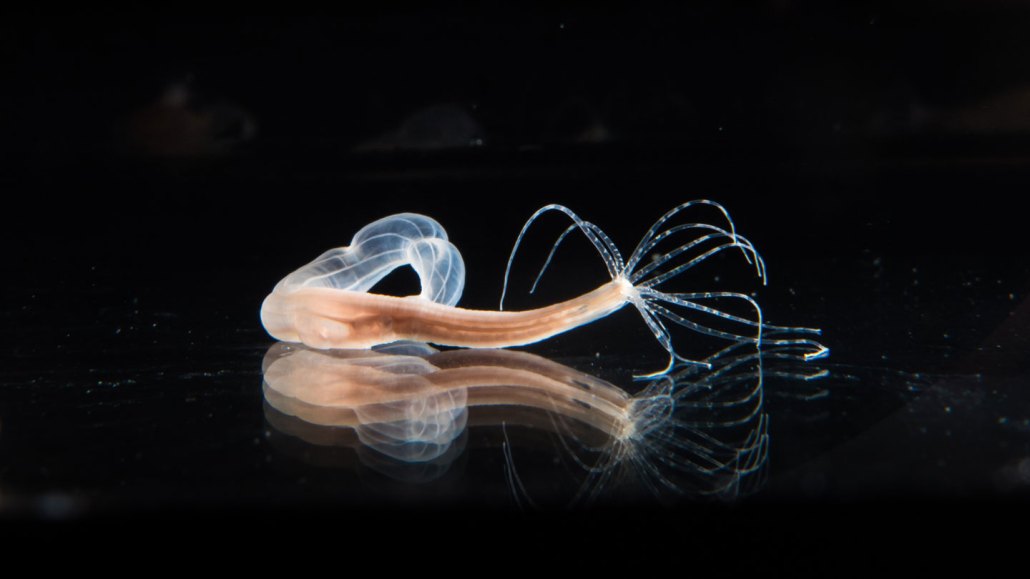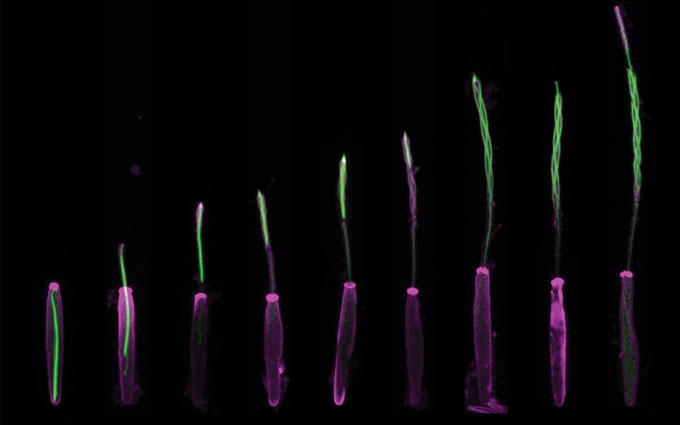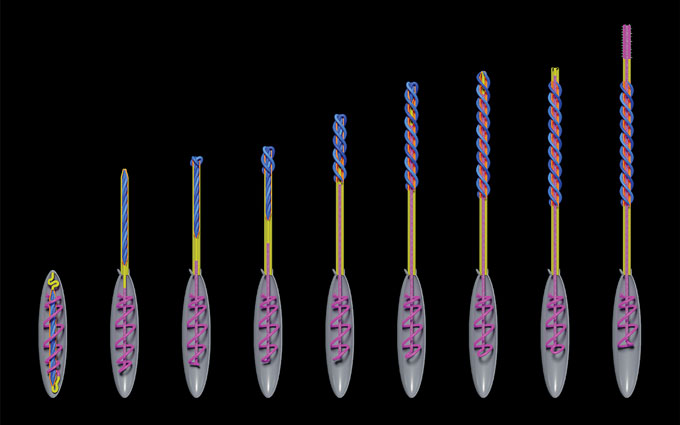Here’s how sea anemones launch their venomous stingers
The projectiles fire, turn inside out and hurl a barbed thread at prey

The starlet sea anemone can rapidly fire stingers from its many tentacles.
Matt Gibson
A new look at the starlet sea anemone’s stinger gets right to the point.
Live-animal images and 3-D computer reconstructions have revealed the complex architecture of the tiny creature’s needlelike weapons. Like a harpoon festooned with venomous barbs, the stinger rapidly transforms as it fires, biologists Matt Gibson, Ahmet Karabulut and colleagues report June 17 in Nature Communications.
Scientists can now see in exquisite detail “what this apparatus looks like before, during and after firing,” says Gibson, of the Stowers Institute for Medical Research in Kansas City, Mo.
In the wild, the starlet sea anemone (Nematostella vectensis) can live in salty lagoons or shallow estuaries, where freshwater rivers meet the sea. Its tubular body burrows into the mud, and a crown of Medusa-like tentacles reaches up into the water, waiting for dinner to drift by (SN: 5/7/13). Each tentacle is packing heat: hundreds of stingers that can mean death for brine shrimp or free-floating plankton.
These stingers are among the fastest micromachines in nature. An anemone can jab a predator or nab some lunch in about a hundredth of a second, says Karabulut, also of the Stowers Institute. Scientists had an idea of how such stingers worked, but until now, had never gotten so up close and personal.
The researchers used fluorescent dye to see the stingers in action and scanning electron microscopy to reconstruct their three-dimensional structure. The work reveals the precise, step-by-step mechanics of the speedy shooters.

Packed inside a stinger’s capsule, a venomous thread coils around a central shaft. When triggered, the shaft explodes out of the pressurized capsule and extends, turning itself inside out like a sock. Finally, the thread races up through the shaft, sending its barbs into an animal’s soft tissue.
Each stinger is good for just one shot. “It’s a one-hit wonder,” Karabulut says. “Once Nematostella uses it, it’s gone.”







